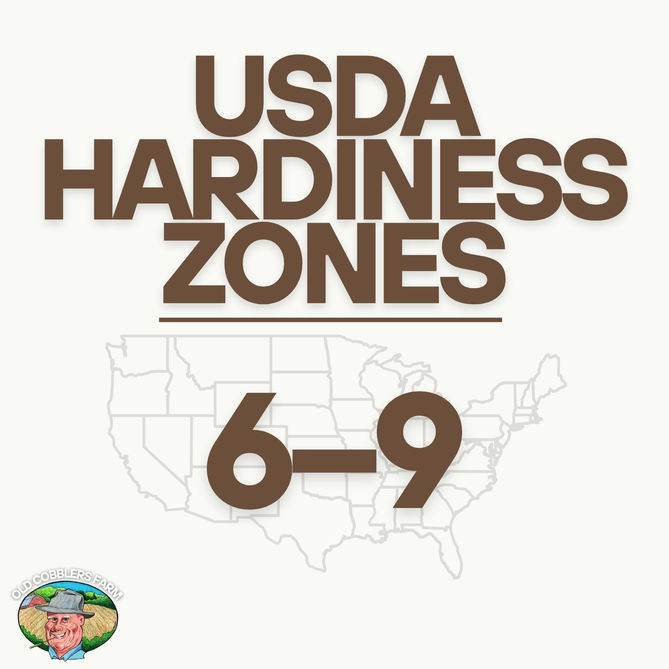Old Cobblers Farm™ Wicked Tuff Turf Japanese Millet
$41.00
Fast-growing, warm-season annual grass ideal for forage, cover crops, erosion control, and wildlife food plots. Highly adaptable and nutrient-rich.
Old Cobblers Farm Wicked Japanese Millet (Echinochloa esculenta) is a versatile, warm-season annual grass seed known for its rapid growth, adaptability, and multiple agricultural and ecological benefits. With a growth cycle of 45–60 days, this millet variety quickly establishes dense stands that provide high-quality forage, effective erosion control, and excellent wildlife habitat.
Japanese Millet thrives in USDA zones 6–9, performing best in warm, full-sun conditions. It adapts to a wide range of soils—including sandy, loamy, and clay types—making it suitable for diverse planting environments. Its tolerance to both wet and moderately dry soils also makes it an excellent option for fields prone to flooding or irregular rainfall.
Whether you’re planting for livestock forage, enriching soil as a cover crop, or attracting waterfowl and game birds to food plots, Old Cobblers Farm Wicked Japanese Millet delivers reliable performance and sustainable results.
Key Features
Seed Type: Warm-season annual grass (Japanese Millet)
Fast Growth: Germinates in 5–10 days; matures in 45–60 days
Sunlight: Thrives in full sun; tolerates light shade
Height: Grows 2–4 feet tall with broad green leaves
Forage Quality: Highly palatable and digestible for livestock
Wildlife Habitat: Produces seed heads that attract ducks, doves, and upland birds
Soil Benefits: Adds organic matter, reduces erosion, improves soil health
Water Adaptability: Tolerates flooding and moderate drought once established
Nutrient Profile
Purity %: 95–99% (varies by batch, ensuring clean seed content)
Germination Rate: Typically 85%+ under optimal conditions
Weed Seed %: Very low (<0.5%)
Other Crop Seed %: Minimal, ensuring true-to-type growth
Inert Matter %: Low, for efficient planting
Nutritional Profile (Forage Use):
High in carbohydrates and digestible fiber
Moderate protein levels (8–12%)
Excellent palatability for cattle, sheep, goats, and poultry
Best Uses / Plant Types
Livestock Forage – Provides nutritious, fast-growing feed
Wildlife Food Plots – Attracts ducks, geese, doves, and game birds
Cover Cropping – Improves soil fertility, suppresses weeds, adds organic matter
Erosion Control – Dense growth stabilizes soil in flood-prone areas
Soil Reclamation Projects – Restores disturbed or depleted soils
Benefits & Performance
Quick germination ensures rapid ground cover
Adaptable to diverse soil types and climates
Provides reliable forage even in challenging conditions
Suppresses weed growth through dense canopy coverage
Supports biodiversity by feeding wildlife and attracting beneficial insects
Non-invasive and safe for mixed planting with other forages or cover crops
How & When to Apply
Seeding Rate:
Broadcast: 20–30 lbs per acre
Drilled: 15–20 lbs per acre
Small areas: ~0.5–0.7 lbs per 1,000 sq ft
Seeding Depth: ¼–½ inch with good soil contact
Timing: Plant in late spring to early summer after the last frost; soil temps should be 65°F+ (18°C+)
Watering: Keep soil moist during germination; provide 1–1.5 inches/week during establishment
Harvest/Use:
For forage: harvest at boot to early heading stage for maximum nutrition
For wildlife: allow plants to mature and set seed heads
Why Choose Old Cobblers Farm Wicked Japanese Millet?
Old Cobblers Farm Wicked Japanese Millet is carefully selected and tested for purity, germination, and adaptability. Unlike generic millet seed, it offers consistent performance, high forage quality, and dependable wildlife attraction. Whether you’re farming, managing land, or improving soil, this seed provides a sustainable and cost-effective solution.
Ideal For
Farmers and ranchers needing high-quality forage
Land managers restoring soils and preventing erosion
Hunters and conservationists planting food plots
Gardeners seeking a quick, nutrient-rich cover crop
Wildlife enthusiasts supporting ducks, doves, and upland game
Available Sizes
5 lb – Wildlife plots or small pastures
10 lb – Mid-size land management projects
15 lb – Larger fields or farms
20 lb – Agricultural & commercial use
Quantity








